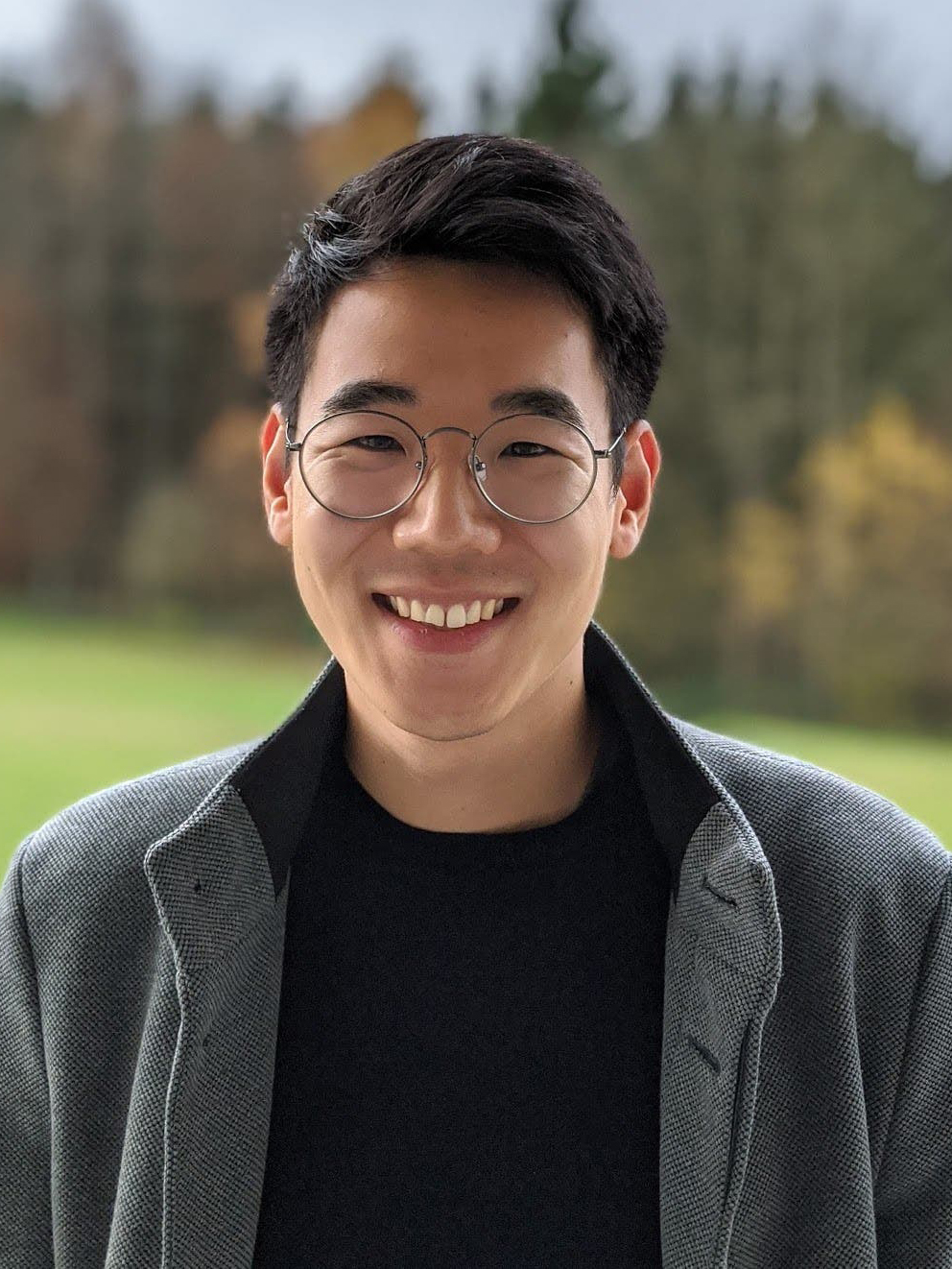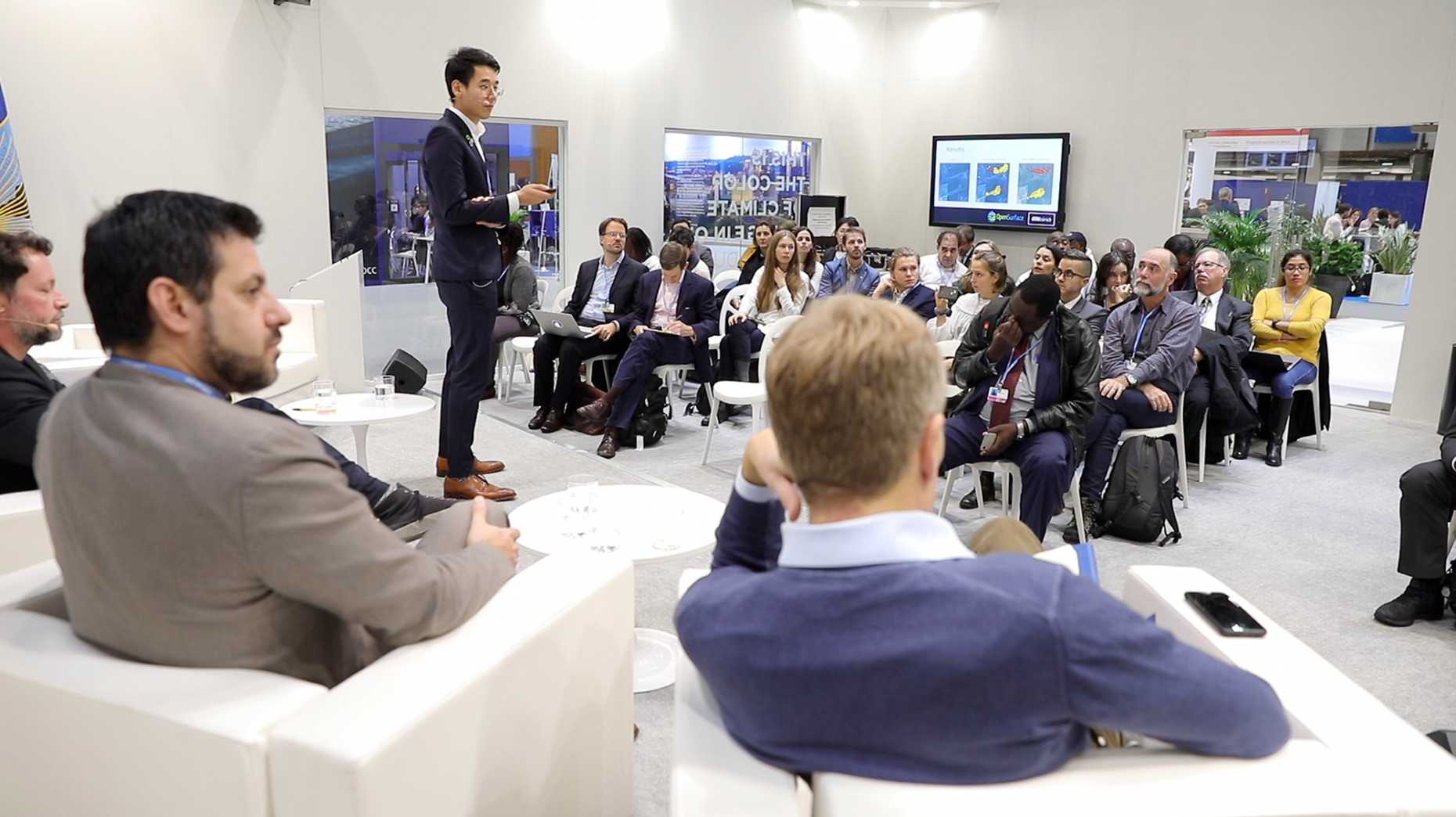Artificial intelligence can help combat climate change
Initially, he wanted to be a particle physicist. Today, he helps protect the rainforest using artificial intelligence and blockchain. David Dao, a doctoral student at the DS3Lab at the Department of Computer Science, travelled to the United Nations Climate Change Conference in Madrid in December to present his research. In an interview, he explains how artificial intelligence can help the climate, but how it also poses risks.

On your website, you write that your goal is to “save the world with crazy technology”. Where does that idea come from?
I have always had a passion for science and technology. I have worked in a wide range of fields, from particle physics to biology research. I was already politically active when I was at school, and ever since Al Gore’s film An Inconvenient Truth, the climate has fascinated and somewhat frightened me. I was able to combine these interests in 2017, at the hackathon Hack4Climate at the United Nations Climate Change Conference in Bonn.
What did you develop at the hackathon?
We learned a lot about climate issues during the hackathon. Land use, including deforestation, is responsible for almost a quarter of all CO2 emissions. Rainforests are not cleared because the farmers have some malicious agenda, but because they are economically driven to do so. There are systems in place to reward farmers who protect the rainforest. But this money hardly ever gets through because the bureaucratic hurdles are very high. Payments are only made if the farmer can prove that the forest is unharmed. However, this is measured using manual methods, and the whole certification process is complicated, lengthy and very expensive. Only very large organisations can afford it, medium-sized projects to protect the rainforest hardly stand a chance.
During the hackathon, we wanted to use artificial intelligence to monitor the forest via satellite images instead of measuring it using handheld equipment. We also wanted to link the whole thing to blockchain, to enable faster payouts to farmers. We won first prize and were invited to present our project to the delegates. They were very interested, and I thought it was a pity to let the project end with the hackathon. I pitched it to my advisor, Professor Ce Zhang, and it worked out, for which I am very grateful. We have now worked on this AI algorithm for a year and have started a pilot project with Chile. We call the algorithm Komorebi, a beautiful Japanese word for the light that filters through tree leaves.
Are you also continuing work on the blockchain side of the project?
Yes, this part of the project is called GainForest and I am working on it privately outside of ETH. GainForest is an attempt to create a synthetic market via blockchain. Through this platform, anyone can invest in projects that protect the rainforest. If the farmers can prove that the forest has been protected – hopefully, this can be done with the technologies we are developing at ETH – they receive a small monthly payment which reaches them very quickly. Investors earn a kind of in-game currency at the same time. The hope is that this currency will have real value in the market. Soon, I will start a pilot project with the Kayapo, an indigenous people in Brazil. There is public satellite data available, so we can observe their forest. And the money is actually getting to them, which is something we tested. There’s a clever system that allows them to collect payments in cash at supermarkets.lwährung einen echten Preis im Markt bekommt. Demnächst werde ich ein Pilotprojekt mit den Kayapo, einem brasilianischen Ureinwohner-Volk, starten. Es liegen öffentliche Satellitendaten vor, mit denen wir den Wald beobachten können. Und das Geld kommt tatsächlich an, das haben wir getestet: Es wird über ein cleveres System in Supermärkten in bar ausbezahlt.
"The rainforest is measured using manual methods. Only very large organisations can afford it, medium-sized projects to protect the rainforest hardly stand a chance."David Dao
Are technologies to protect the climate also the topic of your doctoral thesis?
Partly. My thesis focuses on the theoretical foundations of data and markets. For example, if you have an AI algorithm that needs a lot of data, how can you encourage people to willingly provide their data, and how can you protect their privacy and their rights? For Komorebi, in particular, we need more high-quality data, which we can obtain with drones. For this, we need the help of the farmers themselves. And this is where my thesis comes in: how can I best get the farmers to take these drone photographs?
You presented Komorebi at the climate conference in Madrid. How did that go?
The delegates were quite enthusiastic about what is possible with AI. We also received enquiries from African delegates as to whether the algorithm could not also be applied to their situation. We established a number of interesting contacts. But the negotiations have failed. One of the main topics of the conference was a global carbon market that would save costs. Unfortunately, the nations’ self-interest prevailed, so there was no compromise. It is, of course, very difficult to reach a consensus with almost 200 states.
Isn’t that dispiriting?
Absolutely. Climate depression is a real illness. But we must remain hopeful. This is the third time I have been to the climate conference and I know quite a few people who are involved on the climate front. These are the sunniest people imaginable, even though this field can make you cynical very quickly. That gives me hope. And I think 2019 was a hopeful year, despite the unsuccessful negotiations. The technologies are almost ready, and young people are wholeheartedly committed to the issue.
What is your wish for 2020?
From a scientific perspective, our wish for 2020 would be to bring our technology into the field and see if it works under real-world conditions in the same way as when we tested it. At the societal level, I hope that the climate movement will continue to prevail. But I wish that Youth for Climate would not only protest, but also help to develop these new technologies. To this end, we at the DS3Lab want to offer workshops and seminars, and make our algorithm available as open source.

Why did you decide to study computer science?
Originally, I wanted to become a particle physicist. During a student exchange at CERN, I realised that the problems of particle physics are very computer-oriented. In the end, it is up to the programmer to implement the researchers’ ideas. I found that really cool. On the one hand, this programmer sits at the interface of so much exciting interdisciplinary knowledge, on the other hand, they have responsibility for the experiments. If you write a program that saves a physicist an hour, it saves a thousand physicists a thousand hours – so much more time for science. That’s the person I wanted to be.
And how did you come to study at ETH Zurich?
ETH Zurich has always been my dream university. I was born in southern Germany, where ETH enjoyed an excellent reputation. As a student, I visited Zurich and immediately fell in love with this city. But life here is very expensive. That’s why I did my Bachelor’s and Master’s in Germany, with the aim of completing my doctorate at ETH.
“I wish that Youth for Climate would not only protest, but also help to develop these new technologies.”David Dao
What moved you to work with artificial intelligence?
In the first two semesters of a Bachelor’s programme, many students question whether they have chosen the right subject. I was at this stage when I discovered the online course “Introduction to AI” at Stanford University. It immediately fascinated me. At that time, the topics of AI and machine learning were not widely taught in Germany, so I did even more online courses. I have kept working in this field ever since.
You have repeatedly addressed the ethical use of artificial intelligence in your work. Is AI particularly susceptible to misuse?
Computer science determines almost every area of our lives today. Naturally, there are ethical challenges. With the advent of AI and the way we collect and use data today, however, these challenges have taken on a new dimension. For example, I have worked on algorithms for self-driving cars. You have to think very carefully about the code you write. If you make a mistake, human lives are at risk. I think it’s really important that we computer scientists think carefully about the effects of our work. That’s why I also maintain a list called “AwfulAI”, which shows irresponsible uses of AI.
What are the challenges on the way towards the ethical use of AI?
Communication is very important. Today, people are making money from the hype surrounding AI, and there is a danger of overselling algorithms and giving people a false idea of their capabilities. These algorithms are far from perfect, but they are used to hire people – or to control missiles. I find that very dangerous. We need more ethical guidelines for AI and an ethics committee for new technologies.
How do you manage your time with so many different commitments?
This is only possible through collaboration with great students. It looks like a lot, but it’s also the work of a lot of people. Actually, I think all of them should be giving this interview.